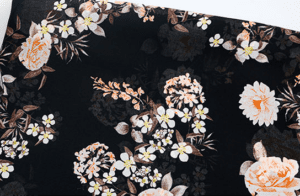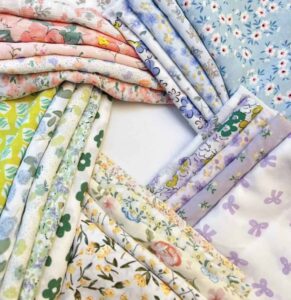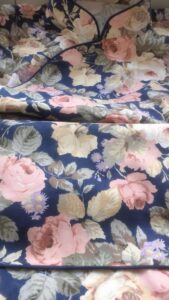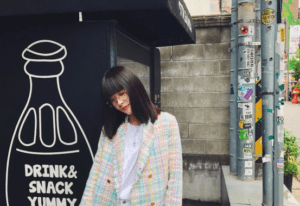Users are now demanding more and more from digital direct printing, including its versatility, resistance to friction and high colour fastness. The degree of fading of digital direct printing when subjected to external factors (squeezing, rubbing, washing, rain, exposure, impregnation, etc.), such as good colour fastness, makes the textile less likely to lose colour during use.
If it is easy to lose colour, it will affect other garments worn on the body or stain other clothes when washing with other clothes; on the other hand, good and bad colour fastness is also directly related to human health. Fastness to rubbing is one of the most common tests for digital printing and refers to the degree of colour loss after rubbing, which is the resistance of the fabric to mechanical rubbing. Fastness to friction is tested by fixing a textile specimen of the required size to the friction tester platform with a clamping device and then rubbing it against a dry and a wet rubbing cloth, finally using the degree of staining of the white cloth as the basis for evaluation against a standard grey sample card. There are many factors that affect the digital direct printing, a few of which are analysed below.
Rougher fabric surfaces will have poorer dry rub fastness
As unconsolidated dyes are the main cause of poor colour fastness to rubbing, under dry conditions, for fabrics with rough or abrasive surfaces, pile fabrics, hard fabrics such as linen, denim and paint-printed fabrics, dry rubbing is likely to cause the accumulation of dyes, paints or Other coloured materials are ground down, even causing part of the coloured fibres to break and form coloured particles, further reducing the colour fastness to dry rubbing. For pile or pile fabrics, the pile on the surface of the fabric is at a certain angle to the surface of the rubbing cloth and is not parallel, thus increasing the friction resistance of the rubbing head when doing reciprocating movements and reducing the colour fastness of such fabrics to dry rubbing.
Influence of the chemical structure of reactive dyes
When cellulosic fabrics dyed with reactive dyestuffs are subjected to a wet rubbing colour fastness test, two main factors cause colour transfer: firstly, the water-soluble dye is transferred to the rubbing fabric during rubbing.
The second is that some of the dyed fibres break when rubbed, forming tiny coloured fibre particles which are transferred to the rubbed fabric, causing staining.
When dyed fabrics are rubbed wet, the covalent bonds formed between the dye and the fibres are not broken and a floating colour is produced. The dye that is transferred is usually a supersaturated dye that has not formed covalent bonds with the fibres and is only adsorbed by van der Waals forces, i.e. a so-called floating colour.
If the process is standardised, the pre-treatment is good and the soaping is adequate, the colour fastness and feel of the digital printing products made with reactive digital printing inks are better, so most high-end products still prefer to use reactive printing.
Effect of degree of staining (colour shade)
Practical experience shows that the colour fastness of reactive dyed fabrics to wet rubbing is closely related to the depth of dyeing, i.e. the amount of colour transferred during wet rubbing is almost linearly related to the depth of dyeing. When dyeing dark colours, the concentration of dye used is high, but cannot greatly exceed the saturation value, as the excess dye does not bond with the fibres, but only builds up on the surface of the fabric and forms a floating colour, which seriously affects the colour fastness of the fabric to wet rubbing.
In addition, untreated cotton fibres swell under wet conditions, increasing friction and decreasing fibre strength, which creates good conditions for fracture, shedding and colour transfer of coloured fibres. Therefore, appropriate pre-treatment of cellulose fibres before digital printing, such as mercerisation, burnishing, cellulase treatment, boiling, bleaching, washing and drying, can improve the surface finish of the fabric.
This improves the colour fastness of the fabric to wet rubbing by reducing friction resistance and wool efficiency and reducing colour floating.
Effect of fabric structure
Not much attention has been paid to the influence of the fabric structure and the surface form of the fabric on the colour fastness to rubbing. In the case of thin fabrics (usually synthetic or silk), the surface of the specimen is relatively loose and, when dry rubbing is carried out, the sample slips partially under pressure and friction with the movement of the rubbing head, thus increasing the friction resistance and the rubbing efficiency.
However, the situation is completely different when it comes to wet rubbing than with cellulose fibres. Due to the extremely low moisture absorption of the fibres or the unknown water swelling effect and the presence of water as a lubricant, the colour fastness of these fabrics to wet rubbing is significantly better than to dry rubbing, which is in marked contrast to the commonly held belief that the colour fastness of textile products to dry rubbing should be better than to wet rubbing and is often a source of concern.
Therefore, it is not uncommon for the colour fastness to wet rubbing to be better than the colour fastness to dry rubbing for certain fabrics. In this case, the type of dyestuff chosen, the properties of the dyestuff, the dyeing and finishing conditions, etc. also have an influence on the colour fastness to rubbing, but this is less important than physical factors such as the fabric’s structure and surface form.
The statistics show that this is mostly the case for dark colours such as black, red and navy. Of course, fabrics such as corduroy, chinos and paint prints are resistant to wet conditions due to the dyestuff and the printing and dyeing process used.
Fastness to rubbing is usually 2 or even lower and is not better than its fastness to drying.
Influence of softeners
The colour fastness of reactive dyestuff printing is improved by soft finishing. The softener has a lubricating effect and reduces the coefficient of friction, thus preventing the dye from falling off. Cationic softeners also form a colour deposit with anionic dyes, which makes it less likely that the dye will fall off. At the same time, the colour precipitate reduces the solubility of the dye, which improves wet rubbing fastness.
However, softeners with hydrophilic groups are not conducive to improved wet rubbing fastness. In practice, colour fixers can be used to seal the water-soluble groups of the dyestuff, control the pH of the finished colour fabric, remove floating colours and improve the smoothness of the fabric, thus increasing the wet rubbing fastness of the fabric. Adequate pre-drying of the front section prevents the dyestuff from “swimming”. Factors that need attention are the amount of alkali, the time of steam, the way of washing and adequate soaping, the first two of which are related to the dye
The degree of hydrolysis is closely related, the latter two being directly related to the floating colour of the dyed product.
To summarise, optimal colour fastness in reactive digital printing requires a reasonable fabric pre-treatment process; good quality reactive digital printing ink; an ink volume that is within the fabric’s tolerance range; and reasonable steaming and adequate washing and soaping. Softeners and fixatives can be added if required.
























